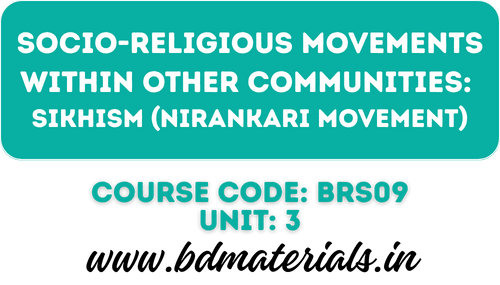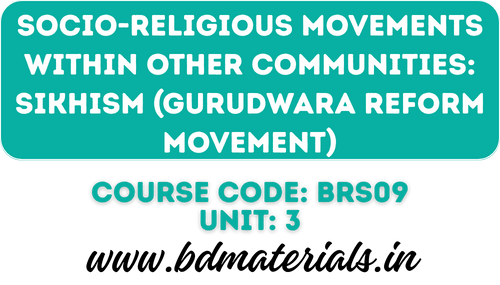AHMADIYAH MOVEMENT: Mirza Ghulam Ahmed [1839-1908]
The founder of Ahmadiyah movement was Mirza Ghulam Ahmed. Ahmadiyah movement was a reaction against Christian missionaries’ criticism of Muslim Malulvis in the 18th century. This movement was also a reaction against the bold policies of the Aligarh reformers.
Mirza was born in 1839 at Qadian in Punjab. He was convinced around 1880 that God called him for a special mission and announced in 1889 that he was receiving divine revelations He began to teach new doctrines and training disciples. He declared that he would be the Imam Mahdi (guided leader) as well as the promised messiah and claimed to be world teacher for the future generations of all religions.
Both Christians and Muslims are looking forward to the second coming of Christ, but Mirza claimed himself as Messiah and denied the death, resurrection, and second coming of Christ. He said that Christ had only swooned on the cross and that later he revived and went on a mission to Kashmir, where he died and was buried. He clarified that in him Mohammed made a “second advent” and he was “an Image of the holy prophet”. He claimed that he was Krishna for the Hindus and Messiah for the Christians and Muslims. He considered himself superior to Christ.
The orthodox Muslims believed the “Imam Mahdi” has to be a man of war, but Mirza was a man of peace. He clarified that the jihad (holy war) he wages would be a spiritual warfare. He was loyal to the British government, but abstained from the political activities. On the one hand, Mirza rebuked the Mullas for keeping the Muslims in superstitions. On the other, he could not tolerate the Muslim rationalist like Syed Amir Ali and S. Khutda Bakhsh. He sided with the conservatives with regard to social reforms. He did not want the abolition of Purdah. He defended ploygamy and divorce.
Nevertheless, the conservatives called him a heretic, blasphemer and enemy of their faith. He was excommunicated and his followers were not allowed the use of ordinary mosques. The Ahmadiyyas carried on propaganda work not only in India but also in many other countries.
The Schism:
Mirza died in 1908 and was succeeded by Hakim Nur-uddin as Khalifa (died 1914). Then Mirza Bashiruddin, son of Mirza, was elected to the office of the Khalifa; but there was a split. Bashiruddin insisted that Mirza Ghulam Ahmed should be considered as a prophet (Nabi). Educated men like Khwaaja Kamaluddin and Maulana Mohammed Ali opposed this proposal and they considered Mirza only as a Mujaddid. They broke away and formed another party with its headquarters at Lahore. So the two groups: 1) The Qadianis (Mirzais) and 2) Ahmadis (members of Lahore group).
Christian doctrines opposed by Ahmadis:
- Virgin Birth of Christ: Ahamadiyyas did not believe in virgin birth of Christ and tried to prove that the birth of Christ was natural. They rebuked Muslims who believed in virgin birth of Christ and if Muslims believe in the supernatural birth of Jesus, they would accept Jesus as divine.
- Miracles of Jesus: They opposed miraculous healing power of Christ. They said that the Gospels used symbolic language and that physical healing could not have taken place in the instances mentioned in the gospels. Ahmadiyyas denied the divinity of Jesus and his superiority to Prophet Mohammed.
- Christ’s moral character: They argued against sinless ness of Jesus Christ on the following grounds:
- a) the baptism of Jesus (Mathew 3: 13-17) – how could the saviour of the world submit to a rite which amounted to confession of sin – the baptism of repentance?
- b) The temptation of Jesus (Mathew 4: 1-12 – if Jesus was sinless, how could he be tempted to commit sin?
- c) Jesus’ own denial, (Mark 10:18) “why do you call me good? Jesus answered No one is good, except God alone”.
- Resurrection: The orthodox Muslims believed that Jesus did not die on the cross, but that Allah took him up into heaven. Mirza denied both death on the cross and resurrection of Christ; a) Mary Magdalene did not recognize Jesus, he had disguised himself as gardener (John 20: 1-18); b) He walked with two of his disciples side by side to Emmaus, yet they did not recognize him (Luke 24: 13-35).
Present Condition:
The world headquarters of the Ahmadiyya movement is Qadian in Gurudaspur district of Punjab. Ahmadiyyas from all over India gather to Qadian for their annual conference in December. There are three to four lakhs members in India particularly in Qadian, Kashmir, Orissa, Andhra, Kerala and Karnataka. In Pakistan, they are mainly found in Sailkot, Lyalpur and Guranwala. There were anti Ahmadiyah riots in 1953 and 1974 in Pakistan, in which a hundred members lost their lives and many were wounded. In 1974, the Ahmadiyyas were classified as non-Muslims by the National Assembly of Pakistan and barred from using Islamic terms by passing an act in April 1984.
They cannot make calls to prayer; they cannot call their place of worship Masjid. They were removed from government jobs and barred from visiting Mecca and Madinah. Because the fundamentalist, say that the Ahmadiyyas work against the national interests of Pakistan and that they assist Israel in its fight against its Arab neighbours. The division of Bangladesh from Pakistan in 1971 was blamed for the activities of Ahmadiyyas.
But the Ahmadiyya leaders claimed that they were a “peace loving and law abiding community, working for the social, religious, educational and moral uplift of humankind in general, and the Muslims in Particular”. They mentioned that their motto is “love for all, hatred for none”. Khalifa is elected for life, but secretaries of various departments are elected for three year periods. Their main work is preaching Islam. They have missionary works in different parts of the world. The members have obligation to pay tithes to the missionary work.
Evaluation:
Mirza Ghulam Ahmed and his followers failed in understanding the personality of Christ, and misunderstood the faith of Christians. They misinterpreted the virgin birth, moral character, miracles, death and resurrection. The founder made superior claims for himself, which left unfulfilled in his life.
Friendly Note
Bachelor of Divinity Materials is your go-to resource for comprehensive Biblical studies, supporting students in Bachelor of Divinity (B.D.) and other theological courses. Our platform offers access to the full syllabus, detailed answers, and a vast collection of assignments, study guides, articles, and research papers to help you excel academically.
We provide downloadable PDFs of study materials, including books and journals, for convenient learning anytime, anywhere. Whether preparing for exams or conducting research, our resources cater to both students and scholars in biblical studies.
Committed to empowering theological learners, we aim to deliver high-quality, authentic study materials. Explore Bachelor of Divinity Materials to deepen your understanding of God’s Word and Christian doctrine, making it a valuable resource for aspiring ministers and anyone dedicated to theology.







